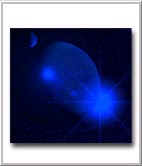| |
|
|
|
Physiology

BLOOD CIRCULATION AND THE PRODUCTION OF MILK
The Quraan was revealed 600 years before the Muslim scientist Ibn Nafees described the circulation of the blood and 1,000 years before William Harwey brought this understanding to the Western world. Roughly thirteen centuries before it was known what happens in the intestines to ensure that organs are nourished by the process of digestive absorption, a verse in the Quraan described the source of the constituents of milk, in conformity with these notions.
To understand the Quraanic verse concerning the above concepts, it is important to know that chemical reactions occur in the intestines and that, from there, substances extracted from food pass into the blood stream via a complex system; sometimes by way of the liver, depending on their chemical nature. The blood transports them to all the organs of the body, among which are the milk-producing mammary glands.
In simple terms, certain substances from the contents of the intestines enter into the vessels of the intestinal wall itself, and these substances are transported by the blood stream to the various organs.
This concept must be fully appreciated if we wish to understand the following verse in the Quraan:
And verily in cattle there is A lesson for you. We give you to drink Of what is inside their bodies, Coming from a conjunction Between the contents of the Intestine and the blood, A milk pure and pleasant for Those who drink it. [Al-Quraan 16:66]
And in cattle (too) ye Have an instructive example: From within their bodies We produce (milk) for you To drink; there are, in them, (Besides), numerous (other) Benefits for you; And of their (meat) ye eat. [Al-Quraan 23:21]
(Translation of this Qur'aanic verse is from the book The Bible, the Quran and Science by Dr. Maurice Bucaille.)
The Quraanic description of the production of milk in cattle is strikingly similar to what modern physiology has discovered.
 |







